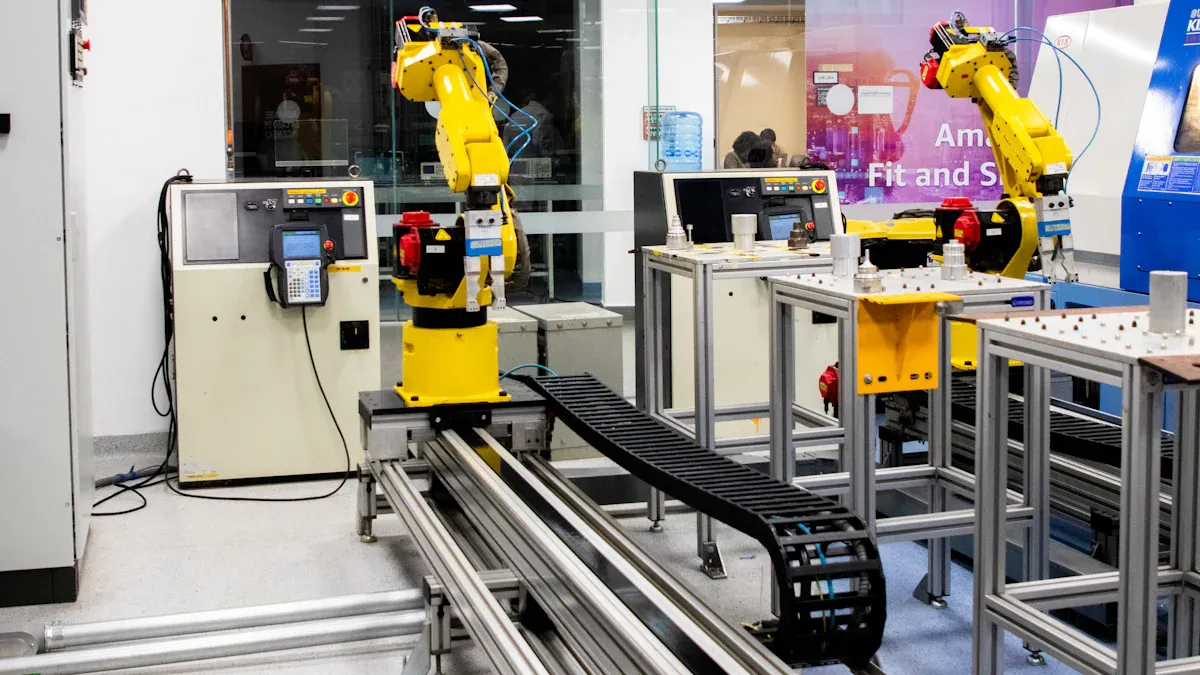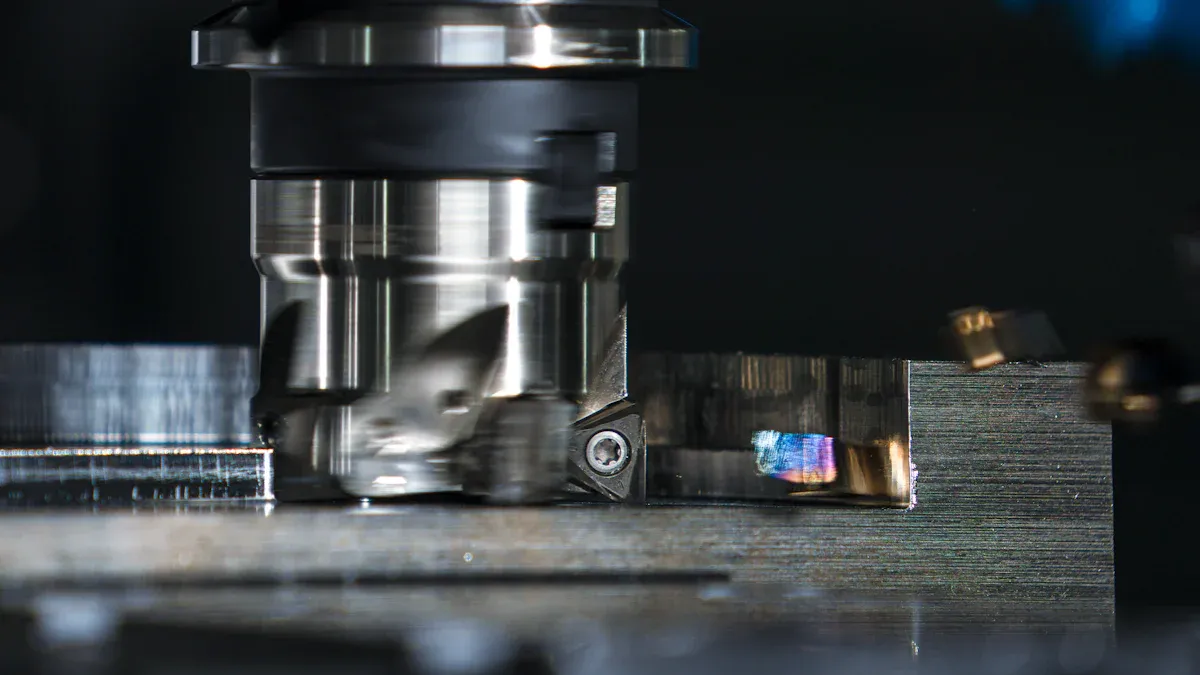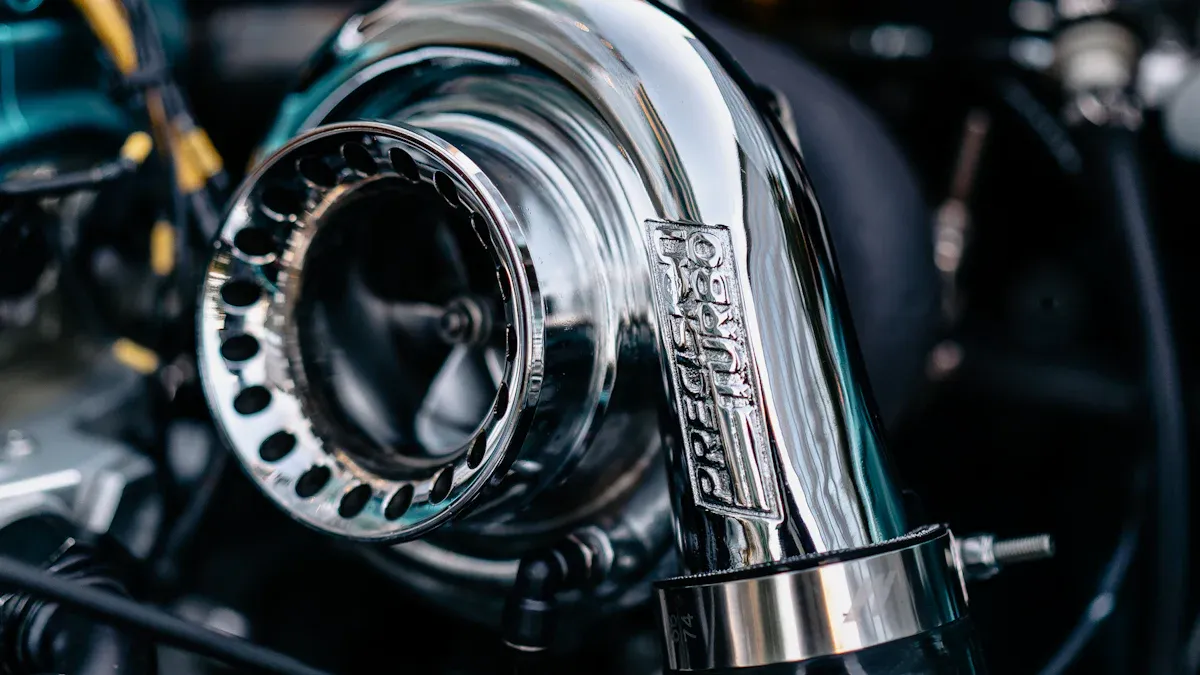
Tight tolerance molding allows you to achieve an incredible accuracy of ±0.005mm. This level of precision comes from combining advanced manufacturing techniques, precision tooling, and strict quality control. You rely on this process to ensure automotive parts perform reliably and safely under demanding conditions. With tight tolerance, you can also push the boundaries of innovation, creating lightweight designs and incorporating advanced technologies. These benefits make it an essential tool for producing high-quality automotive components.
Tight tolerance molding refers to a manufacturing process that ensures parts meet extremely precise dimensional requirements. This process is essential when producing components where even the smallest deviation can compromise functionality. For example, in the automotive industry, tight tolerances ensure that parts fit together seamlessly, reducing the risk of mechanical failures.
Several factors highlight the importance of tight tolerances:
- Dimensional tolerance determines how critical a specific measurement is for a part's performance.
- Proper tolerancing prevents waste, especially when working with expensive molds and materials.
- High-quality tooling and expert design are necessary to achieve consistent results.
You’ll find tight tolerances particularly important in industries like automotive, medical, and electronics. In these fields, even minor inaccuracies can lead to product failures or safety risks. For instance, technological advancements in automotive design demand tighter tolerances to accommodate complex geometries and lightweight materials. By achieving these precise measurements, you can improve part performance, reduce assembly issues, and enhance overall reliability.
Reaching an accuracy of ±0.005mm requires advanced manufacturing techniques and meticulous attention to detail. This level of precision is possible through a combination of factors:
- Tool Design and Material Selection: The quality of the mold and the material used significantly impacts the ability to maintain tight tolerances. Uniform wall thicknesses, for instance, help prevent uneven shrinkage that could distort the final product.
- Process Monitoring: Modern molds often include temperature and pressure sensors. These provide real-time feedback, allowing you to make adjustments during production to maintain accuracy.
- Advanced Machinery: Technologies like 5-axis machine tools and CNC machining enable manufacturers to achieve exceptional precision. For example, aerospace manufacturers have used these tools to produce engine components with tolerances as tight as ±0.005mm, reducing the risk of malfunctions.
Standard injection molding typically achieves tolerances of ±0.1mm. However, precision-oriented parts, such as those used in automotive safety systems, require tolerances as tight as ±0.025mm or even ±0.005mm. Achieving this level of accuracy ensures that parts perform reliably, even in high-stress environments.

Precision tooling and mold design play a critical role in achieving tight tolerances. You need to focus on every detail of the mold to ensure it produces parts with consistent accuracy. Gates, which direct molten plastic into the mold cavity, must be carefully designed to optimize flow and maintain the appearance of the finished product. Adding draft angles to mold walls simplifies the removal of parts, preserving surface integrity and reducing cycle times.
Several factors influence the effectiveness of mold design:
- Component Geometry: Uniform wall thickness, draft angles, and smooth surfaces improve manufacturability.
- Material Delivery System: Gates and runners must ensure molten plastic flows evenly into the mold cavity.
- Cooling Channels: Integrated cooling systems regulate temperature, minimizing cycle times and enhancing part quality.
- Parting Surface Placement: Strategic placement ensures easy ejection and maintains aesthetic appeal.
The design process typically begins with conceptualizing the mold based on specifications. You then create detailed 3D models using CAD software and simulate flow behavior to identify potential issues. Once the mold is fabricated, testing verifies its performance. For example, a global manufacturer partnered with Quickparts to overcome challenges in producing injection-molded components with ±0.05mm tolerances. By refining their mold design and tooling, they achieved consistent results across thousands of parts, reducing waste and eliminating the need for post-machining.
Choosing the right materials is essential for maintaining tight tolerances. High-quality raw materials ensure dimensional stability and consistent mechanical properties, which are critical for precision manufacturing. You should prioritize materials with homogenous composition to reduce variances caused by uneven quality.
Key considerations for material selection include:
- Dimensional stability to prevent shrinkage or warpage during production.
- Mechanical properties that withstand stress and maintain accuracy.
- Compatibility with processing parameters like temperature and pressure.
In tight tolerance machining, materials directly impact the ability to achieve high precision processes. For instance, using premium-grade plastics or metals reduces the risk of inaccuracies caused by material inconsistencies. This ensures that parts meet tight machining tolerances, even in demanding applications like automotive safety systems.
Process control and monitoring are vital for maintaining tight tolerances throughout production. Real-time tracking of variables like temperature, pressure, and cycle time allows you to make adjustments as needed. Statistical process control (SPC) helps analyze production data, ensuring stability and identifying trends for corrective actions.
You can implement several techniques to enhance reliability:
| Technique/Metric | Description |
|---|---|
| Real-time Tracking | Continuous monitoring of key variables during molding. |
| In-line Quality Checks | Assessing parts during production to ensure they meet specifications. |
| Post-process Quality Checks | Inspections after molding, including visual checks and CMM testing. |
| Statistical Process Control (SPC) | Analyzing production data to maintain process stability and identify trends. |
For example, modern molds equipped with sensors provide real-time feedback, enabling you to maintain tight tolerances during production. These systems ensure that parts meet accuracy requirements, reducing defects and improving overall efficiency.
Material shrinkage and warpage present significant challenges in tight tolerance machining. These issues occur when materials cool unevenly during the molding process, leading to dimensional inaccuracies. You must account for these factors when calculating machining tolerances to ensure parts meet specifications.
Several parameters influence shrinkage and warpage, as shown below:
| Key Parameter | Effect on Shrinkage and Warpage |
|---|---|
| Supercritical Fluid Content | Greatest effect |
| Core-to-Skin Volume Ratio | Greatest effect |
| Processing Conditions | Analyzed through DOE |
By understanding these parameters, you can optimize processing conditions and material selection to minimize defects. For example, maintaining consistent cooling rates and using materials with high dimensional stability can reduce the risk of warpage. These strategies help you achieve tight tolerances and maintain part quality.
Tool wear and maintenance are common challenges in cnc machining. High-speed and high-pressure contact with materials cause tools to wear down over time, compromising precision. Environmental factors like debris and humidity can also affect machine performance.
To address these challenges, you should:
- Perform regular maintenance on CNC machines and tools.
- Use high-quality tools, such as carbide, to reduce wear.
- Maintain proper speeds and feeds during machining.
- Utilize the right coolant to enhance tool life.
- Conduct frequent checks to ensure tools remain sharp and consistent.
Proper maintenance not only extends the lifespan of tools but also ensures consistent results in tight tolerance machining. Neglecting maintenance can lead to costly errors and reduced part quality, making it essential to prioritize upkeep.
Tight tolerance machining often involves higher costs due to the complexity of designs and the precision required. Features like undercuts and intricate geometries increase tooling expenses. Mold cost analysis helps you identify areas where costs may exceed initial estimates, enabling better budget management.
You can reduce costs by exploring design alternatives that simplify production without compromising quality. For instance, optimizing part geometry and reducing unnecessary features can lower tooling expenses. Additionally, focusing on high-return investments and improving process efficiency can help you manage costs effectively.
By balancing precision and cost, you can achieve tight tolerances while maintaining financial sustainability.
Tight tolerances ensure that automotive parts perform consistently under demanding conditions. When parts fit together precisely, they reduce the risk of mechanical failures and improve overall reliability. For example, a manufacturer once faced assembly delays and increased costs due to a 0.5 mm deviation in injection-molded brackets for a new car model. By enhancing their tolerance checks and controls, they resolved the issue and avoided future problems.
You can achieve tolerances as tight as +/-0.01 to +/-0.02 inches in automotive electronics. This level of precision ensures that components meet stringent industry standards. Advanced manufacturing techniques, such as cnc machining, further enhance the performance of these parts by maintaining dimensional accuracy and reducing defects.
Tight tolerance molding plays a critical role in improving safety standards for automotive parts. Safety-critical components, such as airbags and braking systems, require exceptional accuracy to function correctly. Even a minor deviation can compromise their performance, putting lives at risk. By calculating machining tolerances accurately, you can ensure these parts meet strict safety requirements.
In addition, tight tolerances minimize the risk of part failure during high-stress situations. For instance, components produced through tight tolerance machining maintain their structural integrity even under extreme conditions. This reliability directly contributes to safer vehicles on the road.
Modern automotive systems rely on tight tolerances to integrate seamlessly with advanced technologies. High-precision injection molds ensure that parts meet the exact specifications required for complex designs. Manufacturers also use tailored solutions to adapt to the unique needs of advanced automotive systems.
| Evidence Description | Key Points |
|---|---|
| High-precision injection molds | Emphasizes the importance of precision in manufacturing tight tolerance molded parts. |
| Tailored solutions for complex automotive designs | Indicates adaptability to meet the specific needs of advanced automotive systems. |
| Use of advanced technologies in mold manufacturing | Highlights the integration of modern technologies that enhance compatibility. |
| Focus on tight tolerances and quality management certifications | Supports the reliability and quality assurance of molded parts in automotive applications. |
| Collaboration during the design phase for cost-effective manufacturability | Ensures that components are designed with manufacturability in mind, enhancing compatibility. |
By focusing on tight tolerances and leveraging advanced technologies, you can produce parts that align with the evolving demands of the automotive industry. This compatibility ensures that vehicles remain efficient, reliable, and innovative.

Tight tolerances are essential for manufacturing engine components that demand high precision and durability. You rely on these components to perform under extreme conditions, such as high temperatures and pressures. Dimensional accuracy ensures that parts fit perfectly, reducing wear and tear and improving engine efficiency. For example, tight tolerance molding allows you to produce pistons, cylinder heads, and fuel injectors with exact specifications, ensuring optimal performance.
To validate the reliability of these components, manufacturers conduct rigorous tests. These include dimensional accuracy checks, material strength evaluations, and surface finish assessments. Even minor deviations can lead to issues like imbalance or increased maintenance costs. By maintaining tight tolerances, you can avoid these problems and ensure the longevity of engine components.
Safety-critical parts, such as braking systems and airbag housings, require exceptional precision. Tight tolerance molding ensures these components meet strict safety standards, reducing the risk of failure during operation. For instance, tolerances as tight as ±0.001 inches are often necessary to ensure these parts function reliably in harsh automotive environments.
Manufacturers use advanced techniques to achieve this level of precision. These include mold shrinkage determination, PVT measurement, and 3D inspections. Compliance with certifications like ISO 9001:2015 and IATF 16949 further guarantees the quality of safety-critical parts. By focusing on tight tolerances, you can enhance vehicle safety and protect passengers in critical situations.
| Evidence Type | Description |
|---|---|
| Certifications | Compliance with ISO 9001:2015 and IATF 16949 standards, working towards AS9100D certification. |
| Testing Processes | Includes mold shrinkage determination, PVT measurement, spiral flow determination, and 3D measurement. |
| Performance Requirements | Capable of tolerances as tight as +/- .001 inches, suitable for harsh automotive environments. |
Modern automotive designs emphasize lightweight materials and intricate geometries to improve fuel efficiency and performance. Tight tolerance molding enables you to produce these complex parts with exceptional precision. For example, aluminum and plastic injection molding allow you to achieve tolerances of ±0.002 inches, making them ideal for intricate designs.
An automotive manufacturer once needed a high-precision component for an advanced braking system. By selecting polyphenylene sulfide (PPS) for its thermal stability and mechanical strength, they met the tight tolerance requirements. This approach not only ensured the part's functionality but also reduced its weight, contributing to overall vehicle efficiency.
| Evidence Type | Description |
|---|---|
| Aluminum Injection Molding | Offers exceptional precision for intricate designs and tight tolerances, critical in aerospace and electronics. |
| Tolerances | Components can be produced with tolerances of ±0.002 inches (±0.05 mm) or better. |
| Plastic Injection Molding | Provides exceptional precision and accuracy for intricate parts with tight tolerances. |
By leveraging tight tolerance molding, you can create lightweight and complex parts that meet the demands of modern automotive engineering.
Tight tolerance molding plays a vital role in achieving exceptional precision, ensuring automotive parts meet the highest quality standards. You rely on this process to enhance performance, improve safety, and integrate advanced technologies into modern vehicles. Continuous advancements in mold design and parameter control techniques will further refine this process. These innovations will support sustainable practices and enable the creation of cutting-edge automotive designs. By embracing interdisciplinary research and new technologies, you can stay ahead in precision manufacturing and meet evolving industry demands.
Tight tolerance molding ensures parts meet precise specifications, improving performance and reliability. This precision reduces assembly issues and enhances safety, especially for critical components like braking systems and airbags.
Material selection directly affects dimensional stability and accuracy. Using high-quality materials minimizes shrinkage and warpage, ensuring parts meet tight tolerances. For example, premium-grade plastics or metals maintain consistency during production.
Yes, optimizing mold design and process efficiency can lower costs. By reducing waste and minimizing post-production adjustments, you save time and resources while maintaining precision.
Industries like automotive, medical, and electronics rely heavily on tight tolerance molding. These fields demand high precision to ensure safety, reliability, and compatibility with advanced technologies.
Manufacturers use advanced tools, real-time monitoring, and statistical process control (SPC). These methods help maintain accuracy, reduce defects, and ensure parts meet strict specifications.